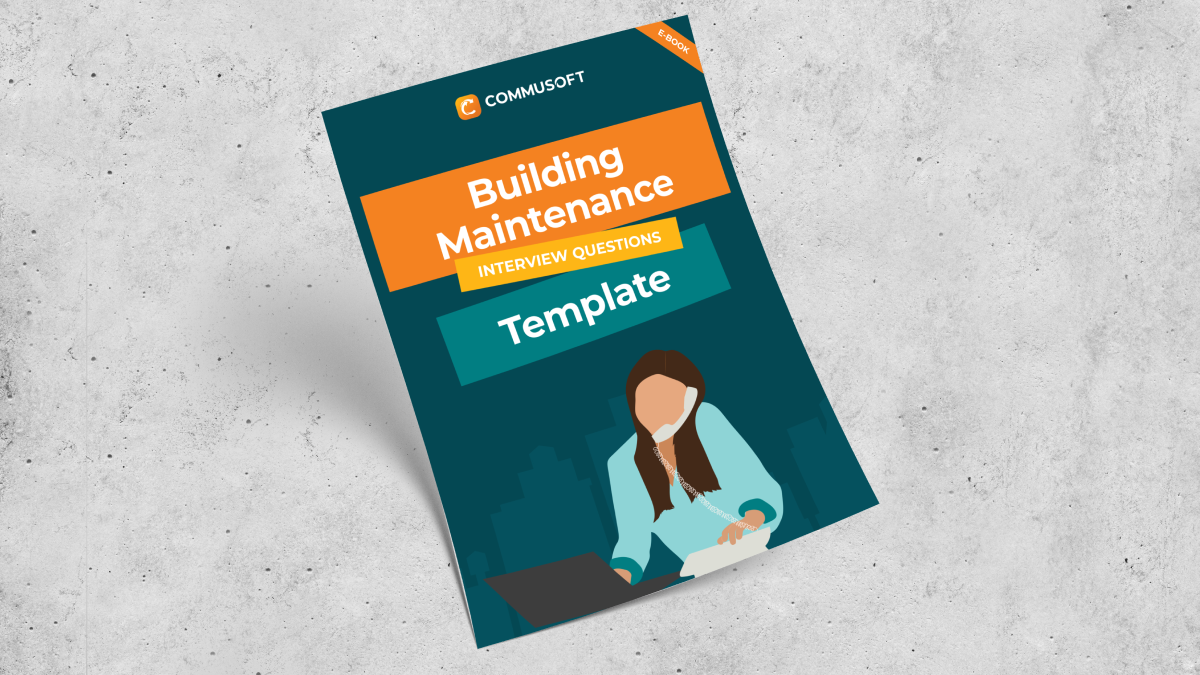Simplify Your Team’s Jobs with Maintenance Management
June 20, 2023 | Read: 9 minutes

Implementing effective maintenance management systems is essential in today’s fast-paced, technology-driven world.
Businesses need to ensure that their field technicians and operations are performing at max efficiency to meet the ever-increasing demands of their customers.
To do this, they need tools that can help streamline processes, prioritize tasks, optimize resources, improve communication, enhance safety, standardize procedures, analyze performance, and automate manual tasks.
Keep reading to explore the different types of maintenance management, how to improve a maintenance department, and whether leveraging maintenance management software can help you increase revenue!

What is Maintenance Management?
Maintenance management is the process of managing and maintaining field technicians, equipment, machinery, or other assets to ensure that everyone and everything is working optimally.
It involves planning, scheduling, executing, and tracking maintenance activities or jobs to minimize downtime, reduce costs, and improve productivity.
At the end of the day, the purpose of maintenance management is to help you understand your job costs so that you can increase profitability and make all operations run as efficiently as possible.
Different Types of Maintenance Management
There are five main types of maintenance management that organizations can use to keep their team and assets running smoothly:
- Preventive
- Corrective
- Predictive
- Condition-based
- Reliability-centered
Each type of maintenance management is designed to address specific maintenance needs and requirements. Some businesses specialize in one or employ more, depending on their size and niche.
1. Preventive Maintenance
Preventive maintenance (also known as planned preventative maintenance) is a proactive approach to maintenance management aimed at preventing equipment failures and minimizing downtime. It involves regularly scheduled inspections, preventive upkeep, and servicing to ensure that equipment is functioning at max efficiency. Many teams rely on planned maintenance software to stay on top of customer assets and appointments.
By identifying and addressing potential issues before they become major problems, preventive maintenance helps to extend the lifespan of assets, improve reliability, and reduce the risk of unexpected breakdowns.
Challenges of preventive maintenance tasks:
- Keeping track of which services need to be completed when
- Managing repeat visits to the same address
- Admin burden of processing numerous work orders
- Staying compliant with statutory maintenance dates

2. Corrective Maintenance
Corrective maintenance is a reactive type of maintenance management that focuses on repairing, replacing, or upgrading faulty equipment or parts after a failure has occurred.
When a breakdown happens, corrective maintenance aims to restore the equipment to its operating condition as soon as possible. This type of maintenance is often unscheduled and requires prompt action to minimize the financial impact on the business.
Having a procedure for corrective maintenance is crucial for addressing unexpected failures and resolving client issues. If you don’t act fast, you’re in danger of breaching service level agreements and the downtime can greatly affect both you and your customers.
Challenges of corrective maintenance tasks:
- Integrating emergency work orders into your team’s schedule
- Maintaining efficiency in when faced with numerous short-notice changes
- Sourcing and stocking the right spare parts to handle emergencies
- Keeping track of different service level agreements when working with multiple customers
3. Predictive Maintenance
Predictive maintenance utilizes automated monitoring and data analytics to predict when equipment failures are likely to occur. By collecting and looking at data from various on-site sources such as sensors or service records, businesses can clearly identify patterns that signal potential problems.
This allows maintenance teams to fulfill work orders proactively, based on the condition and performance of the equipment, rather than relying on fixed schedules. Predictive maintenance helps optimize maintenance efforts and lower maintenance costs.
Challenges of predictive maintenance tasks:
- Hiring the right people to manage the predictive aspects
- Keeping track of data
- Maintaining efficiency when there isn’t a fixed repair schedule
4. Condition-Based Maintenance
Condition-based maintenance focuses on monitoring the condition of installed equipment to determine when maintenance actions are required. It involves the use of real-time monitoring and diagnostic tools to continuously track the health and performance of assets.
By monitoring key parameters such as temperature, fluid levels, or other indicators required for equipment, condition-based maintenance enables field technicians to detect signs of deterioration or abnormalities before they cost the business. This enables targeted maintenance interventions based on live data and analytics.
Challenges of condition-based maintenance:
- Hiring the right technicians to interpret the data correctly
- Storing condition data safely
- Integrating the repair schedule with your existing business processes

5. Reliability-Centered Maintenance
Reliability-centered maintenance is a comprehensive strategy that aims to ensure the reliability, availability, and performance of critical assets. It involves analyzing the functions for each asset and then developing a customized maintenance plan based on the data.
This type of maintenance considers factors such as the importance of the asset, its operational context, and the potential risks associated with failure (such as breaching SLA, loss of clients, and poor reputation).
By focusing on high-priority assets and tailoring maintenance activities to their specific needs, reliability-centered maintenance maximizes awareness while minimizing repair costs.
Challenges of reliability-centered maintenance:
- Prioritizing the right assets
- Using historical data to optimize scheduling work orders
- Teaching admin how to manage maintenance teams with a focus on reliability
How to Simplify Jobs with Maintenance Management
You can’t fix something if you don’t know what is wrong with it, right? By tracking your processes, you’ll be able to know where to look when you want to start growing your business. Maintenance management plays a crucial role in simplifying jobs and ensuring smooth operations within a company.
By implementing effective maintenance management practices, businesses can streamline processes, prioritize tasks, optimize resources, improve communication, enhance safety, standardize procedures, analyze performance, and automate manual tasks.
These strategies not only simplify the jobs of field technicians but also contribute to increased efficiency, reduced downtime, and improved overall productivity.
1. Streamlining Processes
Looking to get more work orders done without having to hire more people? The place to start is with your existing processes.
Streamlining processes is a key aspect of simplifying jobs through maintenance management. It involves reviewing existing workflows and identifying areas where inefficiencies or bottlenecks occur.
By eliminating unnecessary steps, optimizing sequences, and improving coordination between teams, organizations can streamline their maintenance processes. This strategy enables workers to carry out their tasks more effectively, reduces the likelihood of errors, and enhances overall operational productivity.
2. Prioritizing Tasks
Prioritizing tasks is essential for ensuring that maintenance efforts are focused on the most critical areas. By categorizing maintenance tasks based on their urgency, importance, and impact on operations, organizations can allocate resources effectively.
Prioritization helps teams stay organized, address high-priority issues promptly, and prevent minor problems from escalating into major disruptions. Clear task prioritization simplifies decision-making processes, allowing techs to work more efficiently and proactively.
3. Optimizing Resources
Optimizing resources involves allocating personnel, equipment, and assets to the different maintenance tasks. By understanding the workload, skill sets, and availability of every employee, organizations can assign resources effectively, avoiding overburdening or underutilizing their workforce.
With asset maintenance software, proper resource optimization is easy and ensures that tasks are completed on time, reduces unnecessary downtime, and simplifies the coordination and scheduling of maintenance activities.
4. Improving Communication
Getting your teams to improve communication can be a challenging part of maintenance management. By establishing clear lines of communication between all departments (and with clients), organizations can streamline their information flow and avoid costly misunderstandings.
Consistent communication ensures that instructions, work orders, and updates are relayed accurately and in a timely manner, reducing errors and facilitating collaboration. This simplification of communication processes enhances overall efficiency and helps to resolve issues more effectively.
5. Enhancing Safety
Enhancing safety by providing appropriate training, prioritizing protocols, and ensuring compliance (you can learn more about OSHA laws and regulations here) will help organizations create a safer environment for their workforce. This is also a great way to recruit some of the top field technicians for your team. When employees feel safe and secure, they can perform their jobs with greater confidence and focus.
Simplifying jobs by taking every safety measure lowers the likelihood of accidents, injuries, and equipment damage, resulting in smoother operations and increased productivity.
6. Standardizing Maintenance Management Procedures
Standardizing procedures as a maintenance manager means providing clear guidelines and consistent practices. Establishing standard operating procedures for a wide variety of residential or commercial work allows for each employee to take the same approach when in the field, office, or warehouse.
When consistent procedures are in place, it simplifies training, minimizes mistakes, and boosts capacity. This also facilitates the sharing of best practices among coworkers, leading to improved performance and streamlined operations.
7. Analyzing Performance
Analyzing performance (or maintenance industry key performance indicators) is an essential part of improving any business. By collecting and analyzing data on jobs and activities, organizations can identify patterns and areas for improvement.
A few examples of maintenance KPIs:
- Strategic, business direction metrics, measured over long periods of time
- Operational, area-specific metrics that can be tracked daily/weekly
- Departamental, department-specific metrics that only make sense in that team’s context and can be tracked by the head manager
Performance analysis helps to identify bottlenecks, inefficiencies, or recurring issues, allowing maintenance teams to make data-driven decisions and implement targeted positive change. Download your customized KPIs sheet here!
Leveraging Maintenance Management Software
Thankfully, leveraging a computerized maintenance management system (or CMMS software, for short) can help you oversee and automate all the business processes listed above. If you aren’t taking advantage of the best technology available in the industry, you’ll fall behind the competition and lose out on new revenue opportunities.
The more work you take on, the harder it’ll be to manage. If you’re not prepared with the proper software as your business scales its operations, you’ll have a tough time finding success. If your business starts to scale its operations and you’re not prepared with the proper software – you can quickly mismanage jobs or technicians and become prone to costly mistakes.
With Commusoft, you’ll be able to implement field service management software with your current technology and streamline processes, improve communication, and analyze data to simplify maintenance operations and find new revenue streams.
Learn why automating the monitoring of contracts is best for your business!

Cristina Maria
I'm here to bring you next-level strategies to the field service industry. When I'm not working on the best tips to grow your business, I'm on the lookout for sci-fi novels and cookie recipes.








